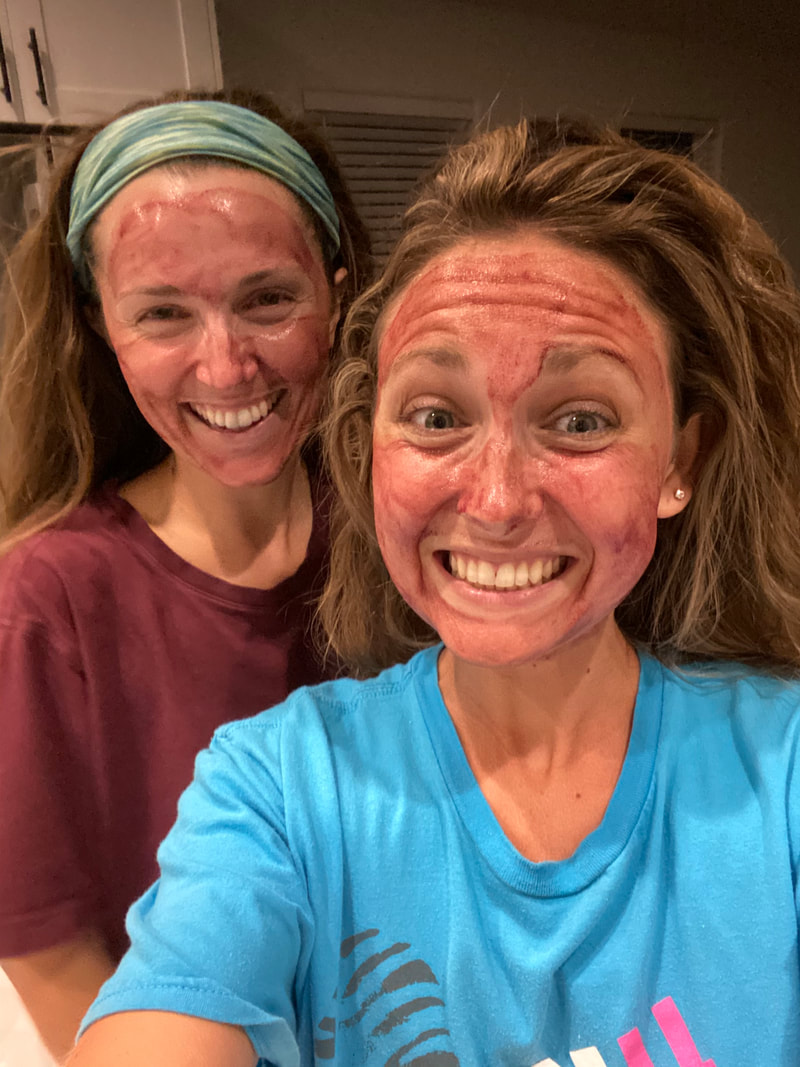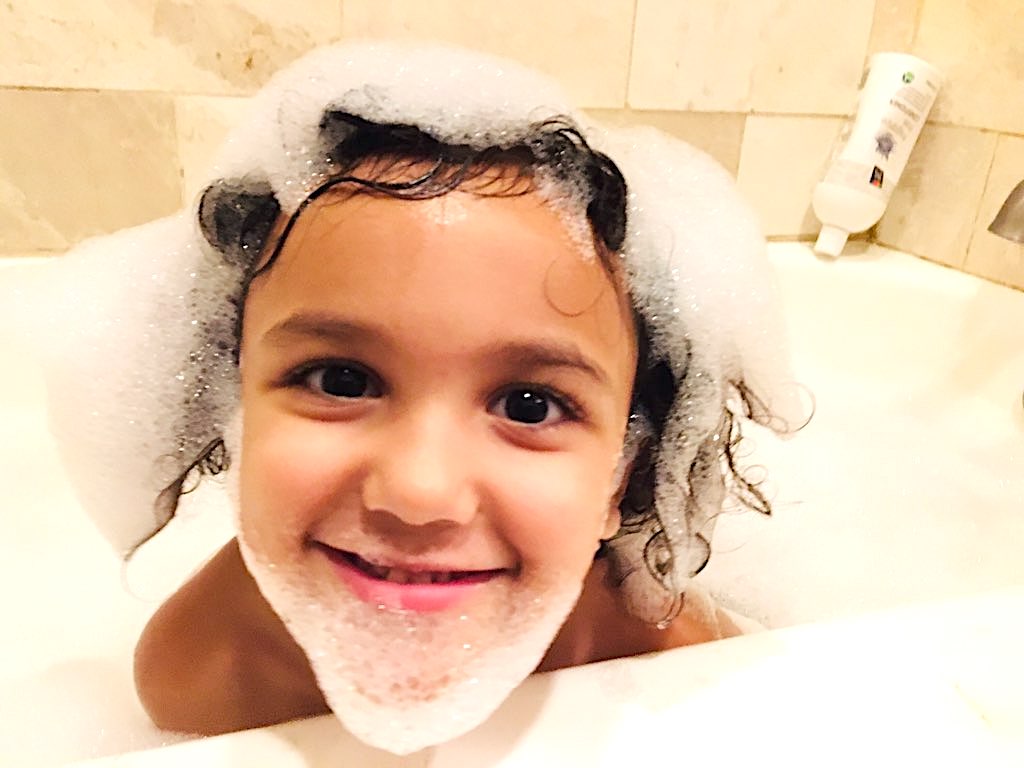|
Over the course of each day, the average American woman applies to her skin 12 beauty and skincare products that contain roughly 168 unique ingredients (1). Some of these ingredients are harmless, or even beneficial. However, many are chemical compounds that, when used daily, add up to significant toxic exposure over time. Chemicals aren’t the enemy hereIn fact, the air we breathe and the water we drink are indeed chemicals. We absolutely need chemicals for our survival and thriving! For our long-term health, though, it is important to consider the impact of repeated use of some of these product ingredients that are largely unregulated in the United States (1, 7, 8). The good news is that simple shifts in routine can decrease the amount of concerning ingredients we are exposed to through personal care products. And this isn’t just about women–the same study about women’s exposure found that the average man uses six different products daily, exposing him to about 85 different ingredients. Limiting exposure to hundreds of different chemicals might sound like a just nice idea, but keeping many of these ingredients in our daily personal care routines come with significant risks (1). Why choose clean beauty products?Our skin is like a giant mouth that readily absorbs whatever we slather on it. Firming creams, lotions, makeup, medicines and more all pass through the skin into the bloodstream for circulation throughout the body—without the benefit of initial detoxification by the liver or kidneys like with the food we eat. Our skin isn’t designed to filter environmental toxins in the same way as our digestive system (2). Your skin is like a spongeToxic chemicals in skincare products don’t just stay on the outer layer of our skin, they are absorbed through the skin into the body. From there, they are either processed and excreted, or, more concerning, stored in bodily tissue. When we pay attention to what we’re putting on our skin, we protect the inside of our bodies as well. The best course of action is to choose products that reduce the toxic burden on the body (3). Why are potentially harmful ingredients in skincare?The same ingredients that cause a toxic burden to the human body are added into many formulas to increase shelf-life by preventing growth of mold and bacteria (3). However, many of these ingredients include compounds that have been linked to birth defects, various types of cancer, developmental issues, and hormone and neurological disruption (4, 5). Fortunately, we have a great amount of research at our fingertips to help sort through what’s on the shelves and learn how to make safer choices for ourselves and our family. Where to go for reliable informationThe Campaign for Safe Cosmetics uses “smarts and sass to pressure the cosmetics industry to make safer products” while also educating the public and supporting legislation to increase safety standards for personal care products (6). Particularly helpful is their Red List of chemicals of concern for each product category. This shows you exactly what ingredients to avoid for shampoo, conditioner, cosmetics, sunscreen, and more (6). Find toxin-free skincare products customized to fit your unique needsThe Good Face Project has an app to connect users with customized toxin-free skincare products based on skin type, budget, lifestyle, and more. After answering a series of questions including specific allergens or toxins you’d like to avoid, the app generates top picks based on your preferences. Detailed product information is listed along with links to retailers such as Amazon and Target. Explore products rated by consumersThe Environmental Working Group provides a free SkinDeep database and app, rating thousands of products for consumers to search and make informed decisions about cosmetic and skincare purchases. It’s a convenient tool to check what’s in your current products, plan future purchases, or use while standing in the grocery aisle choosing a new shampoo or shave cream. Data Driven RatingsThe SkinDeep database rates products based on two parts. 1. Ingredient hazards based on known and suspected health hazards linked to a product’s ingredients. 2. Available data regarding those ingredients, which references information pooled from over 60 databases, government and private agencies, academic institutions, and more. Detailed information about the EWG rating system can be found here. Your better buying choices influence companies to comply to better standardsWhen consumers are empowered to make informed choices about the ingredients in our products, companies eventually follow suit and make changes, leading to cleaner, toxin-free products made more widely available. This small effort benefits each of us individually and ultimately touches many more lives as well. How to make product swaps without feeling overwhelmedIt can be overwhelming to dump everything you're currently using and immediately switch your entire line-up to all toxin-free, high-quality personal care products. And of course, as coaches, we wouldn’t suggest such a dramatic change anyway! In keeping with the approach of incremental, achievable steps that lead to lasting change, choose one or two products you’re ready to swap and go from there. It's about reducing exposure, not perfection.The key idea is reducing exposure to known and potentially harmful ingredients, not perfection. With this in mind, consider beginning with the products you use most often. This will be different for everyone, taking into consideration individual lifestyle and favorite products. For instance, I rarely wear makeup, but I do wash my face twice a day. It would make sense to first look at switching out my facial cleanser and moisturizer for cleaner versions. For people who wear full makeup most days, foundation or lipstick might be the best place to begin. Make slow changes...both for your sanity and your walletAs with any new habit, making changes slowly over time prevents overwhelm that can easily happen to the best of us. The goal isn’t to be perfect, but to reduce the toxic load on our bodies so we can have cleaner, safer personal care routines. All of our coaches would agree this is best done little by little, for the sake of our sanity—and our wallets. DIY Cosmetic ProductsRemember the idea that our skin is a giant mouth? Some experts suggest to not put anything on your skin that you wouldn’t eat (10). While I definitely would not suggest eating even the cleanest, toxin-free products on the market, there are plenty of foods that can successfully double as skincare. I have been known to keep a small jar of plain sugar in the shower for exfoliating, use mashed up strawberries as a face mask, and even whip up some homemade lotion. DIY beauty recipes can be a fun way to engage children and teens in the process of learning about toxin-free personal care. A cleaner start might just be as near as your kitchen cabinet. Easy to find Potential SwapsIf you’re not into DIY food as beauty, there are plenty of highly rated products out there to choose from at local drugstores and big box stores. Check out these seven potential swaps that are both easy to find and well-rated. Some are scored as low as a 1 or 2 according to the SkinDeep database, and others are EWG Verified or rated positive by the Good Face Project. Not every product listed below is perfectly toxin-free, but in the spirit of small changes, consider checking these against what you’re currently using. #1 Mr. Bubbles Extra Gentle Bubble Bath EWG SkinDeep score of 2, found at WalMart. For a grown-up relaxing bubble bath, add 1-2 drops organic lavender essential oil to a capful of the liquid bubble bath before pouring into the water. (Glass of wine optional!) #2 Herbal Essences Bio:renew Sulfate Free Aloe + Eucalyptus Scalp Balance Shampoo EWG Verified. Found at Target. This and several other shampoo scents in the Bio:renew line are also EWG Verified (but not all–be sure to check carefully) and widely available. #3 Equate Long Lasting Aluminum Free Deodorant Lavender EWG SkinDeep score of 1, found at WalMart. This store brand deodorant contains no parabens or phthalates and is gluten-free. #4 Revlon Photoready Prime Plus Makeup Primer EWG Verified, + Good Face Project safety grade. Found at Walgreens and Rite Aid. For use before makeup or simply as a part of your skincare routine, this primer is infused with B5 and hyaluronic acid. #5 Physicians Formula Organic Wear Natural Origin Mascara EWG SkinDeep score of 1, + Good Face Project safety grade. Found at Walmart. Better for us, and better for the environment with a recyclable wand. #6 Olay Deep Hydration Serum EWG SkinDeep score of 2, + Good Face Project safety grade. Found at Walmart and Target. Recommended for dry, combination, and normal skin, with hyaluronic acid. #7 Honest Beauty Eyeshadow Palette EWG SkinDeep score of 1, and ! Good Face Project safety grade. Found at Target and Walgreens. A versatile palette that includes shimmers and mattes, made without parabens, paraffins or talc. Happy shopping and swapping! For a partner in your health and wellness goals, including giving your body products an overhaul, book a session with one of our national board certified coaches or connect directly with Cayla. References:
4 Comments
Marcie Desmond
10/14/2020 03:33:34 pm
Thank you for sharing all of this valuable information Cayla! Great resources and tips!
Reply
Cayla Garcia
10/15/2020 05:04:31 am
Thanks Marcie! I have been interested in cleaner skincare for years now and love sharing tips. It's exciting to see how much easier clean products are to access now versus 10-15 years ago–both in price point and retail availability. Have a great weekend! :)
Reply
11/13/2020 08:28:31 am
Cayla, I loved this article! Great tips and potentially life-saving information on the toxins in many skin care products (and how easily those toxins get into our body)!
Reply
Leave a Reply. |
take control of your health.Connect with a board certified coach to help you succeed with health changes. COACHES:
|






